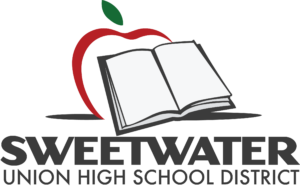by Alejandro Picazo, RDM Librarian
MakerSpace Ideas
What do we want at RDM?
What are MakerSpaces?
MakerSpaces are areas of learning that may include a focus on science, technology, engineering, and mathematical concepts that are taught through problem-solving, discovery, exploratory learning and critical thinking. All projects require active student participation. The MakerSpace’s hands-on approach encourages scientific inquiry, investigation and experimentation. Students are challenged as they build, problem solve, discuss, and evaluate scientific and design principles in action.
MakerSpaces Across the District
Castle Park High’s MakerSpace
Students use the kits during lunch. The Librarian has noted an increase in the number of visitors to the library particularly, from the significant sub-groups (ELD and Special Education) who are using these kits. The tools that are being used include: Littlebits and Knex.
LittlebitsThis littlebits kit is part of a STEAM Education class pack that includes sensors, fans, circuits and all of the necessary materials for students to use technology and engineering skills to build and create inventions. The bits are color coded for easy assembly.
|
Knex Education- Real Bridge BuildingThis set is designed to assist students in their study of the history, function, structural design, geometry and strength of bridges.
|
Knex Education- Exploring MachinesThis set expands upon middle school students’ knowledge of simple machine concepts. It requires for students to investigate, explore and experiment as they analyze, synthesize, and evaluate information.
|
Castle Park Middle’s MakerSpace
The MakerSpace is part of an after-school club that is open to students on a weekly basis. The meetings are in a classroom. A great asset of this program is that it is inter-generational. Parents join in on the fun by working with their students in activities such as sewing puppets together that use LED sensor technology. Students learn to use conductive thread, copper tape and even soldering irons.
Sensor Technology and SewingThis project required skill and precision in its making. Students learn to sew as well to handle sensor electronics.
|
MakerSpace MaterialsStudents have plenty of materials to support their genius and creativity.
|
BeadsThis is a student favorite. Students learn to create and design necklaces by handling jewelry beading tools.
|
Rancho del Rey Middle’s MakerSpace
What do we want at RDM Library?
Based on my observations after having visited the only two sites that I know to have a MakerSpace, we can adopt an eclectic approach. There is value in providing students with opportunities to engage in classical tasks. For instance, parents and even grandparents can be invited to facilitate workshops where sewing, knitting, and other arts and crafts are taught. This can be an effective way to involve our community and provide inter-generational learning experiences. These tasks can be complemented with STEM related tools and equipment that require students to use science, engineering, math and technology to invent as they use critical thinking skills to evaluate and problem solve.
What equipment can we consider to get started? (in addition to the ones above)
Vex Motorized ArmThis set challenges students to build a fully functional VEX Motorized Robotic Arm.
|
RobotThis G15 model is an award winning set. Students build, program and play this fully-operational, 4-foot tall, robot with life-like articulated limbs powered by 10 motors for realistic movement.
|
Breakout EDUThis is the latest in educational gaming. We must have it here. In Breakout EDU games, players work collaboratively to solve a series of critical thinking puzzles in order to open a box. The kit can be used to play hundreds of games from many different disciplines and subjects.
|

Media Table with LCD Monitor
We need creative seating arrangements that promote collaboration and accomodate the use of technology. In this picture, students are actively engaged as they observe the monitor that is connected to a laptop. Students can connect their iPads to a monitor to collaborate on projects and assignments. They can sit at this table as they engage in Breakout EDU games.

Dry Erase it All
Let’s create writing spaces for students to encourage collaboration and sharing of ideas and knowledge. We can apply Whiteboard Paint on our walls and provide for whiteboard space at our circulation desk and sides of the book cases as well.

Mobile Creativity Carts
Mobility and flexibility is key in a makerspace. A cart like the one pictured provides for easy storage and movement of equipment.









